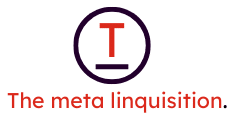Life is full of pressure – work deadlines, family responsibilities, financial concerns. But there’s one type of pressure you shouldn’t ignore: your blood pressure. Regular blood pressure monitoring plays a crucial role in maintaining good health and preventing conditions such as hypertension.
Understanding blood pressure and its potential impacts on health are essential for both patients and health care providers. This article delves into the importance of blood pressure control and how regular monitoring can benefit patients with high blood pressure or those at risk of developing it.
Also to discover : Effective techniques for relaxation and stress relief
The Vital Sign: Understanding Blood Pressure
Before delving into the benefits of regular monitoring, it’s important to comprehend what blood pressure is and why it’s relevant to your health. Blood pressure is the force exerted by the blood against the walls of the blood vessels. The heart pumps blood into the arteries, creating this pressure.
To measure blood pressure, health care providers use a device, typically a cuff that squeezes your arm. The result is given in two readings: systolic (the pressure when your heart pushes out blood) and diastolic (the pressure when your heart is resting between beats).
Additional reading : Natural remedies for headache relief
According to a study published on PubMed, having consistently high readings is a major risk factor for heart disease and stroke. That’s why monitoring blood pressure is crucial.
Hypertension: A Silent Threat
Hypertension, also known as high blood pressure, is a common but serious health issue. Often dubbed as the “silent killer,” it doesn’t usually cause symptoms until it’s too late.
The condition can lead to damaging effects on the heart and other organs if left unmanaged. It’s associated with heart disease, kidney disease, stroke, and even cognitive decline. Therefore, keeping a keen eye on your blood pressure readings is crucial.
Regular blood pressure monitoring helps identify hypertension early, allowing for appropriate management and control. It’s not merely an office routine but an essential part of home health care, especially for patients with a history of hypertension.
Home Blood Pressure Monitoring (HBPM)
Home Blood Pressure Monitoring (HBPM) is a rising trend, especially during this era of telemedicine. HBPM allows patients to measure their blood pressure at home or outside the doctor’s office using portable devices.
According to PubMed, HBPM improves adherence to treatment and enables better blood pressure control compared to office measurements. It provides a more comprehensive and accurate representation of your blood pressure as it takes multiple readings at different times of the day.
Moreover, HBPM enables a collaborative approach between the patient and the provider. You can share readings with your doctor, leading to personalized care and a better understanding of your health status.
The Role of Technology in Blood Pressure Monitoring
Technology plays a significant role in making blood pressure monitoring accessible and straightforward. Various devices are available in the market, from basic to advanced ones that can store readings, detect irregular heartbeats, and connect to smartphone apps.
These advancements make it easier for you to incorporate blood pressure monitoring into your daily routine. You can now check your blood pressure at the comfort of your home, providing you with more control over your health.
The Power of Prevention
Regular blood pressure monitoring is not just for patients with hypertension. It’s also for individuals who are at risk or even just concerned about their heart health.
Monitoring empowers you to take proactive measures towards your health. It helps you understand how lifestyle factors such as diet, exercise, stress, and medication impact your blood pressure. You can then make informed adjustments to manage or reduce your risk of hypertension.
In summary, regular blood pressure monitoring is a powerful tool for managing hypertension and for preventive health care. It offers numerous benefits, from early detection of high blood pressure to enabling better control and preventing serious complications. With the aid of technology, monitoring has become more accessible, allowing you to take charge of your health.
Effectiveness of Ambulatory Blood Pressure Monitoring
Ambulatory Blood Pressure Monitoring (ABPM) has shown to be an effective method for keeping track of blood pressure over an extended period. Typically, this kind of monitoring involves wearing a portable device that measures blood pressure at regular intervals throughout the day and night.
The Mayo Clinic highlights the importance of ABPM in diagnosing conditions like “white coat hypertension” – a phenomenon where blood pressure readings are higher when taken at the doctor’s office due to anxiety, and “masked hypertension” – a condition where blood pressure readings are normal at the doctor’s office but elevated at other times.
By providing a more accurate and comprehensive picture of your blood pressure, ambulatory monitoring can help healthcare providers make the best decisions regarding your treatment plan. It can also help determine how well your current medications are working and identify any health risks that may not be evident with a single blood pressure measurement.
Ambulatory Blood Pressure Monitoring can also be beneficial to those who have kidney disease. High blood pressure can be both a cause and a consequence of kidney disease. Therefore, regular monitoring can help manage this condition and prevent further damage to the kidneys.
The Promise of Remote Patient Monitoring
In today’s digital age, remote patient monitoring is gaining momentum. It’s a healthcare delivery method that uses technology to monitor patients outside of traditional healthcare settings, often at home. This approach can be particularly beneficial for blood pressure control, especially for those struggling with high blood pressure.
Remote patient monitoring involves using digital tools such as smart blood pressure monitors that can transmit data directly to health care providers. This type of system allows for real-time tracking of blood pressure, enabling health care providers to respond promptly to any significant changes.
Moreover, remote patient monitoring reduces the need for frequent doctor visits, especially for those with mobility issues or living in remote areas. It also promotes proactive health management. Patients can take an active role in tracking their blood pressure levels, helping them feel more engaged in their health wellness.
Additionally, the Mayo Clinic states that remote patient monitoring can help identify white coat hypertension and masked hypertension, which can be missed during traditional office visits. Thus, it provides a more accurate and comprehensive understanding of a patient’s blood pressure pattern.
Conclusion
In conclusion, regular blood pressure monitoring is a crucial aspect of preventive healthcare. It enables early detection and better management of high blood pressure, reducing the risk of heart diseases, stroke, kidney disease, and other serious health issues.
With advancements in technology, blood pressure monitoring has become more accessible and user-friendly. Tools like Home Blood Pressure Monitoring and Ambulatory Blood Pressure Monitoring allow for more accurate and consistent tracking of blood pressure. Meanwhile, the emerging trend of remote patient monitoring offers promising prospects in making blood pressure control even more convenient and effective.
Remember, your health is in your hands. By incorporating regular blood pressure monitoring into your daily routine, you can take a proactive stance towards maintaining your health wellness.











